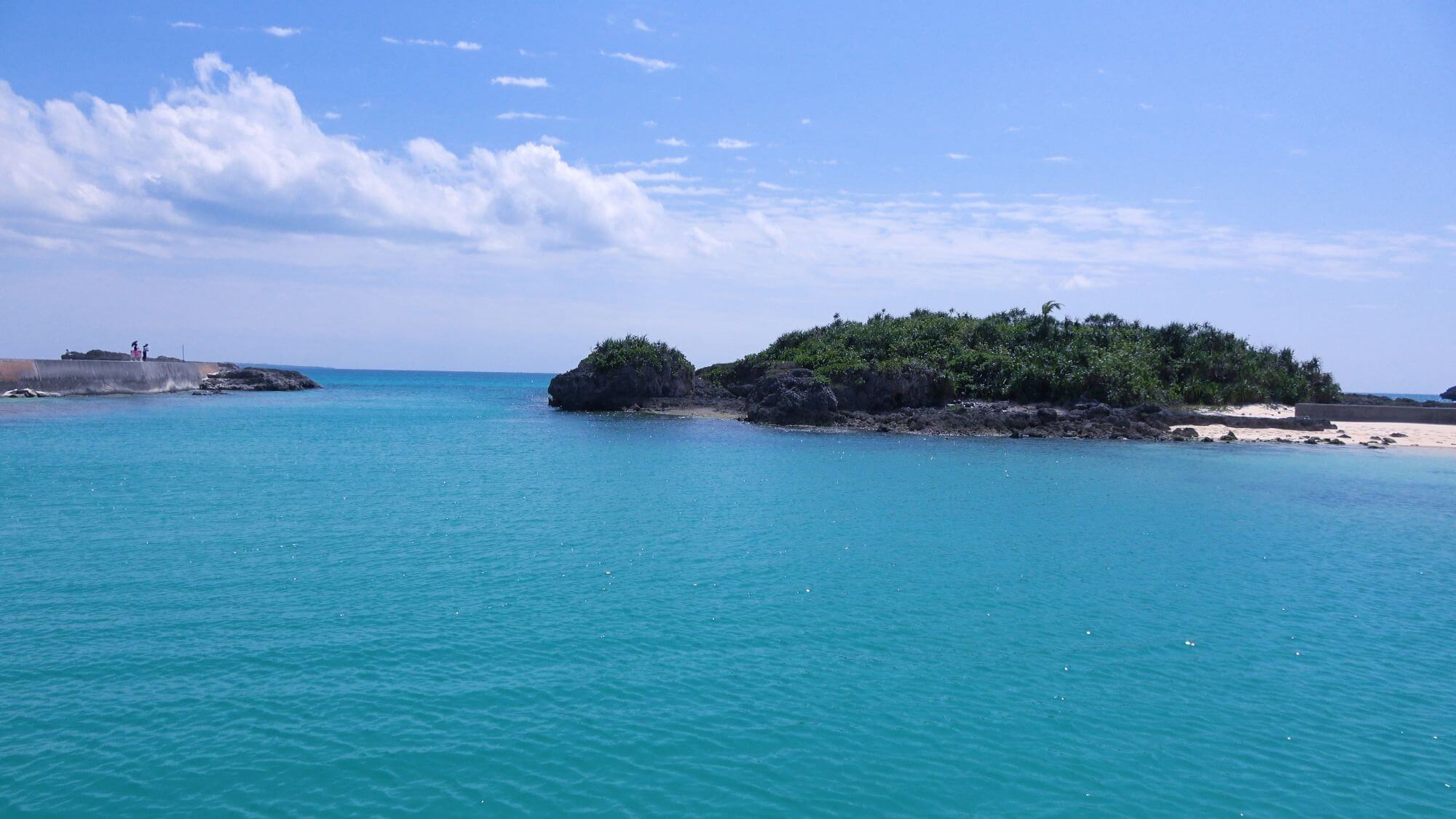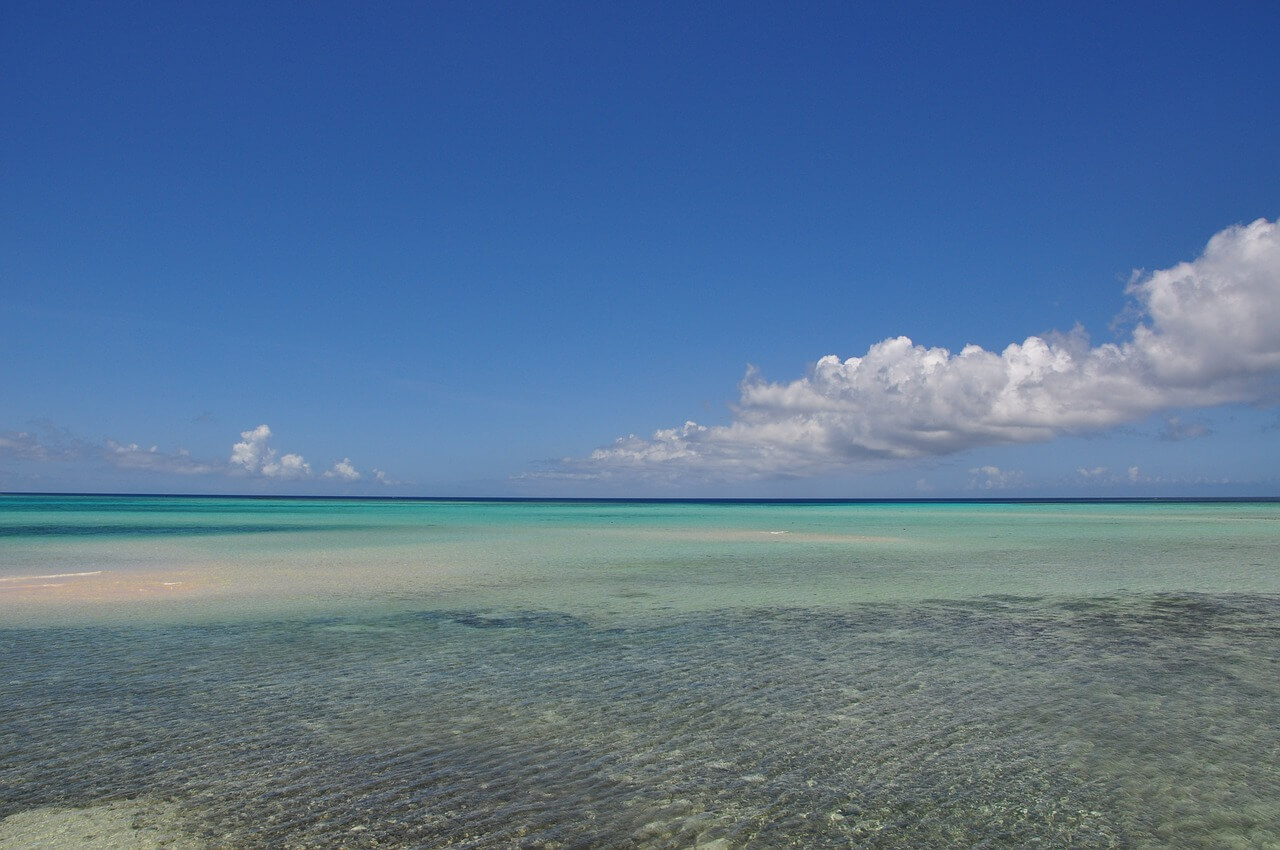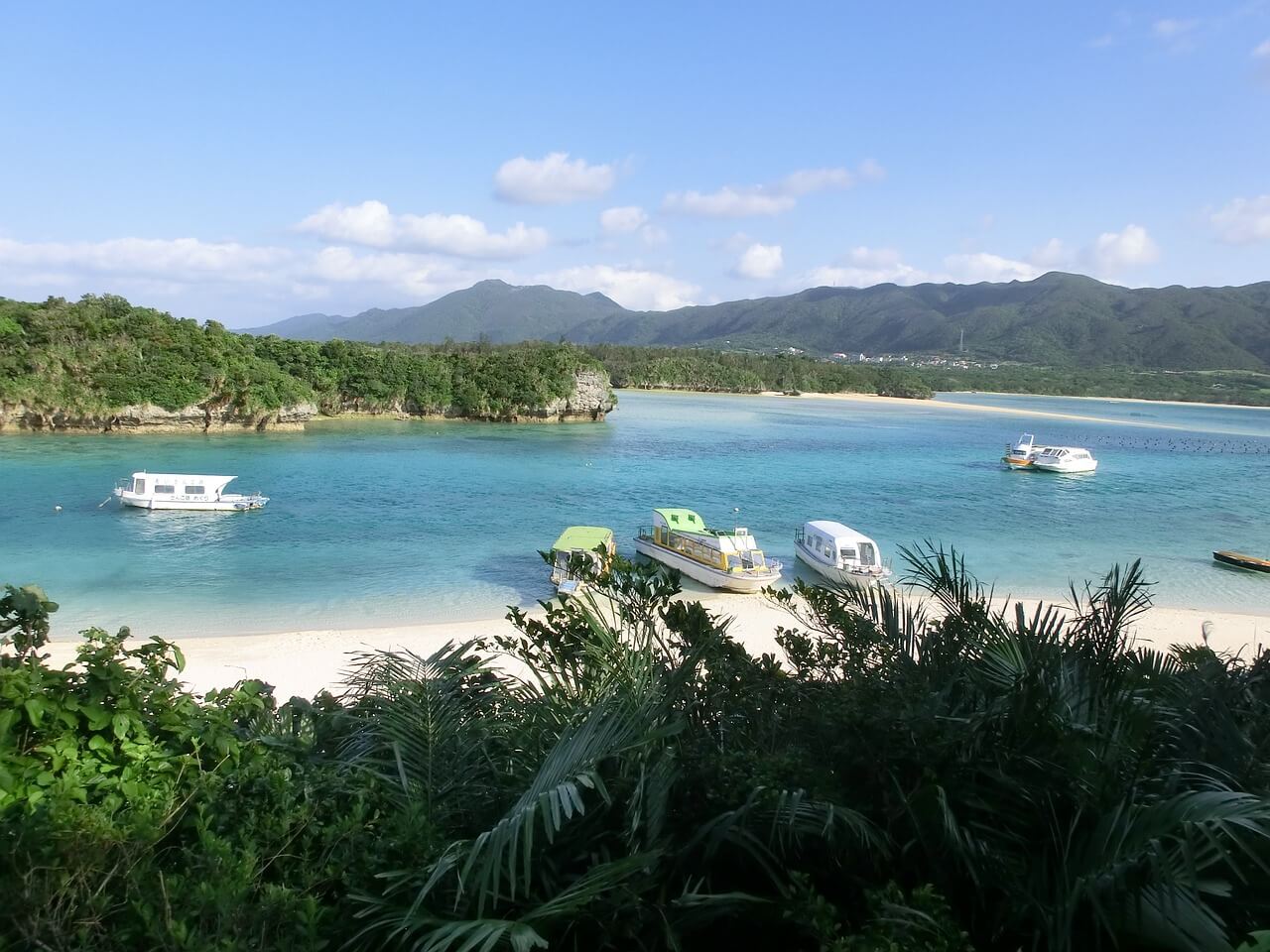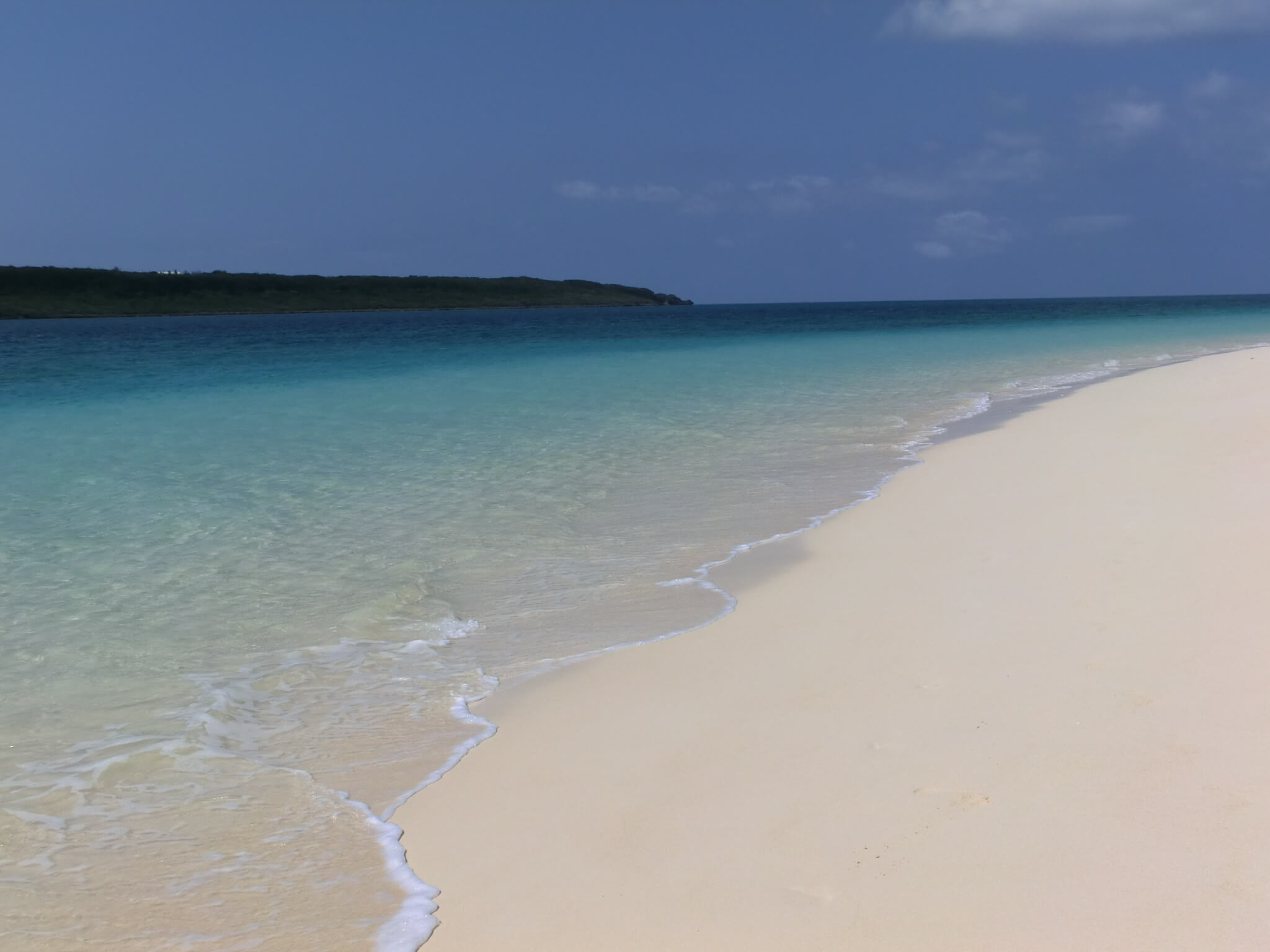Miyakojima, a Tropical Paradise
This island in Okinawa is home to one of Japan's most beautiful beaches, Maehama, with its white sand and crystal-clear water.

Miyakojima is the largest of the nine islands that make up the Miyako Islands in Okinawa Prefecture. With its subtropical climate and idyllic beaches, it is one of the most popular holiday destinations for the Japanese in warmer weather, from April until October.
The best-known beach is uncontestably Maehama, with its seven kilometres of white sand and its clear water. Another point of interest is the Higashi-Henna-Zaki cape located on the south of the island. Its white lighthouse opens onto one of Japan’s most stunning panoramas; indeed, it appears on the list of the 100 most beautiful landscapes in Japan. To the north of Miyakojima lies Yabiji, one of the largest coral reefs in the country, which is regularly explored by snorkelling enthusiasts.
An ideal island for cycling
The island is very flat and can be visited by car or by bike. Spanning 25 km from north to south and 15 km from east to west, it has numerous roads and paths that allow visitors to discover all its nooks and crannies. There are also bridges that connect to the neighbouring islands of Irabu, Ikema, and Kurima, which are likewise lined by heavenly beaches.
However, Miyakojima is more than just a destination for lazing about. The island is also rich in history. It wasn’t until 1879 that the government of Meiji Japan connected the island to the Japanese administrative system. At the end of the Second World War, it passed into the hands of the Americans, like many islands in Okinawa Prefecture, before returning to Japanese control in 1972. The American military presence was documented by photographer Greg Girard in his series Hotel Okinawa.
Miyakojima can be accessed by plane from Japan’s main airports. More information can be found on the Okinawa tourist office website.



TRENDING
-
The Tattoos that Marked the Criminals of the Edo Period
Traditional tattoos were strong signifiers; murderers had head tattoos, while theft might result in an arm tattoo.

-
Paris, Tokyo: Robert Compagnon
With his co-chef and talented wife, Jessica Yang, Robert Compagnon opened one of the top new restaurants in Paris: Le Rigmarole.
 3:31
3:31 -
Chiharu Shiota, Red Threads of the Soul
Last year, more than 660,000 people visited the retrospective 'Chiharu Shiota: The Soul Trembles' exhibit at the Mori Art Museum.

-
‘Before Doubting Others, Doubt Yourself. Who Can Truly Say a Dish Isn’t What It Used to Be?’
In ‘A Non-Conformist’s Guide to Surviving Society’, author Satoshi Ogawa shares his strategies for navigating everyday life.

-
The Story of Sada Yacco, the Geisha who Bewitched Europe
Described by Dazed magazine as the first beauty influencer, she has been restored to her former glory since 2019.





